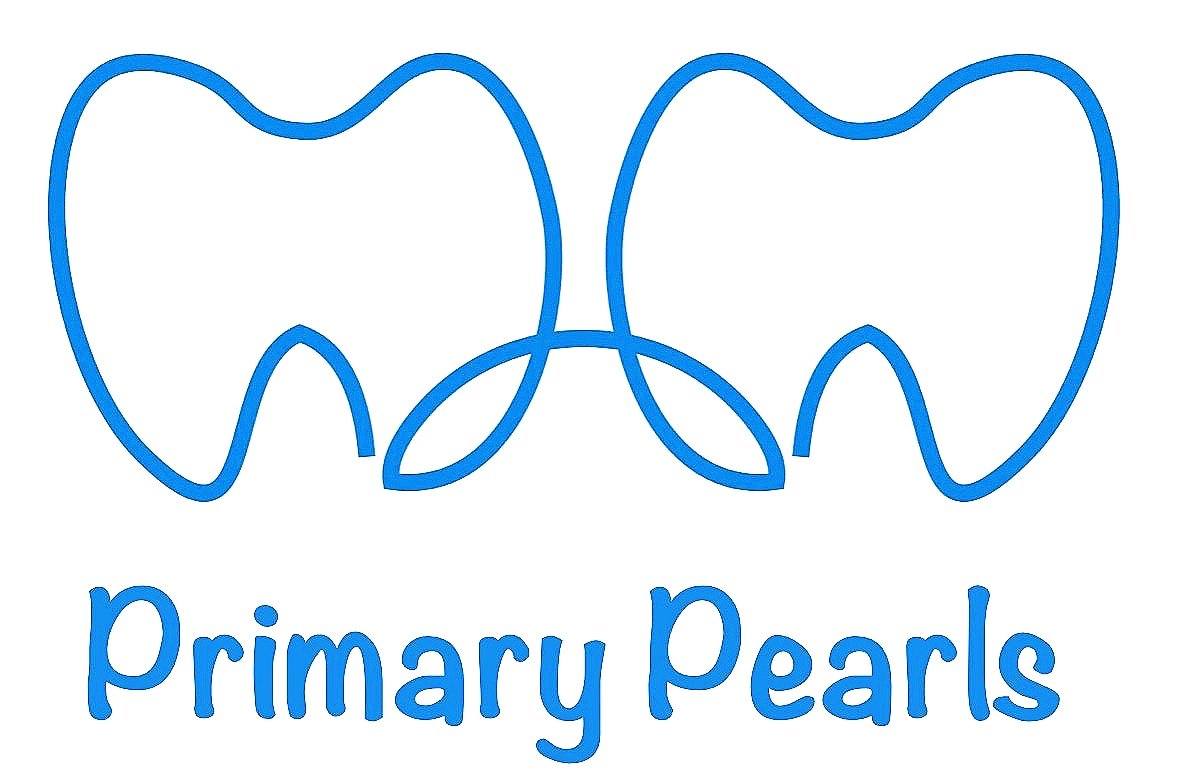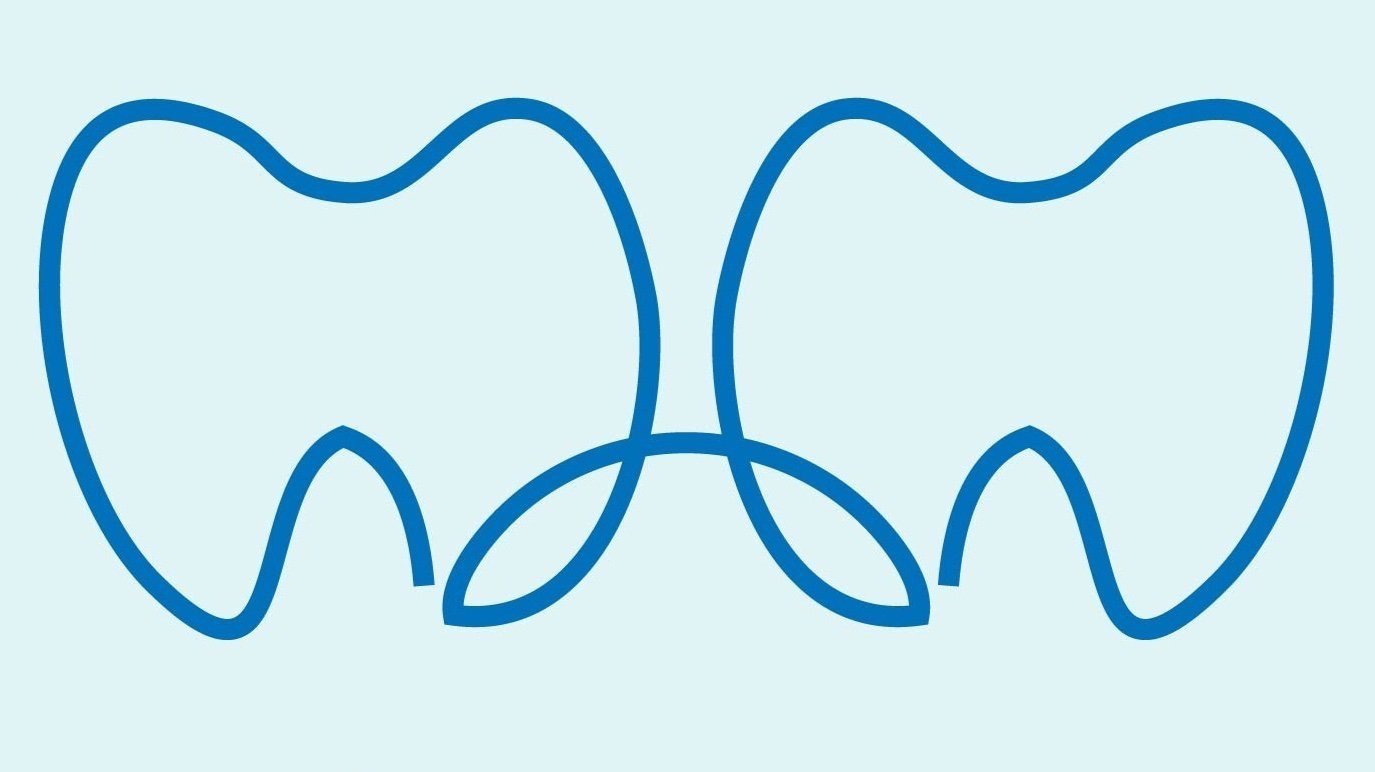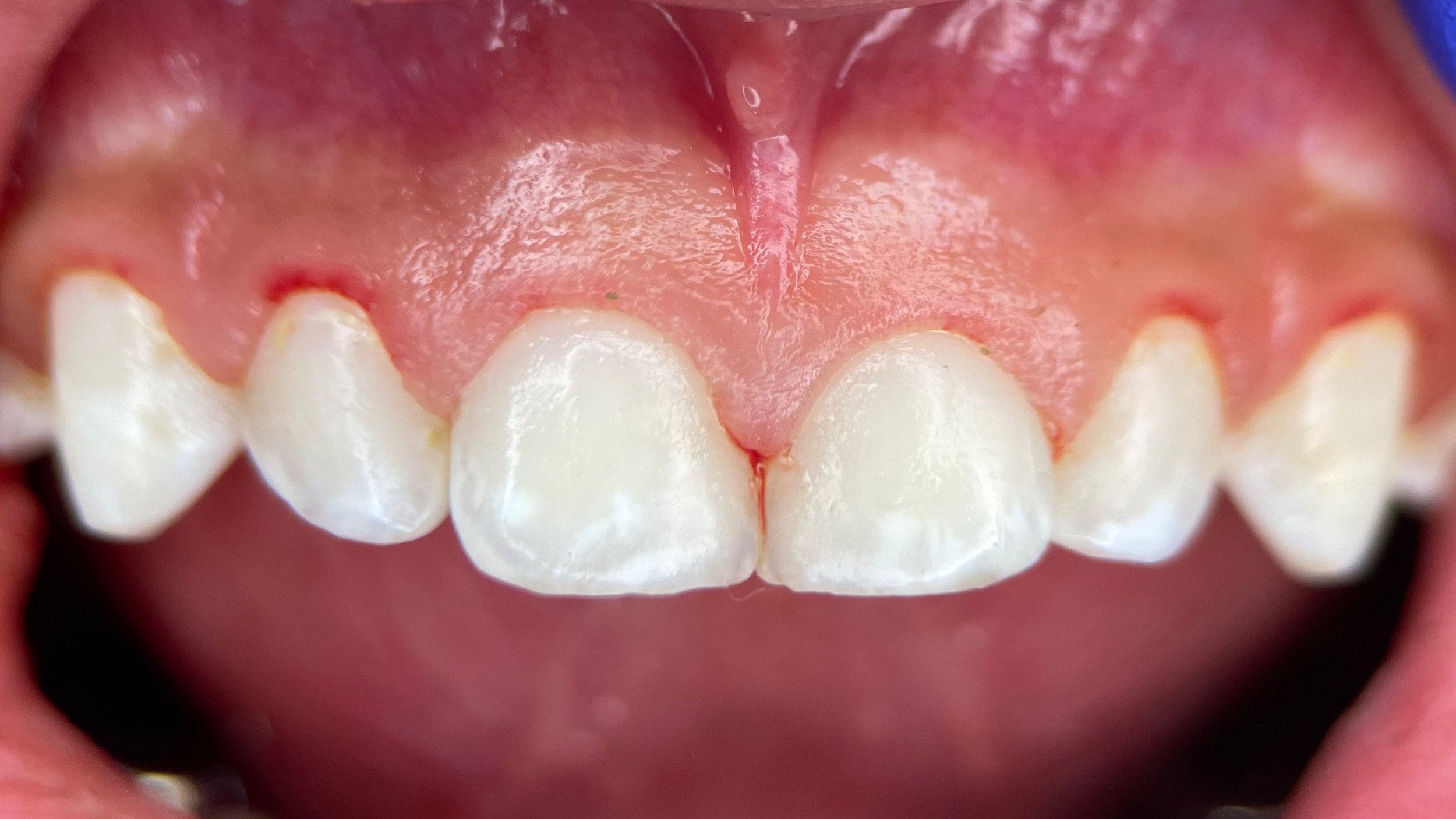How to brush your child’s teeth
Obvious plaque and staining from a child’s teeth who have not been brushed in a few days.
One of the first questions for parents is: “How’s the toothbrushing going?” Many parents are hesitant to answer this question because they really don’t know how to brush their kid's teeth. Sure, brushing your own teeth is easy, but how do you manage to accomplish it on your small and very mobile child?
Here’s what we usually discuss with parents…
Choose the right size toothbrush
When your child doesn’t have teeth or when the first teeth erupt, using a washcloth to wipe the teeth is a good introduction to oral care. Once they have a few teeth, select a soft-bristled toothbrush with a head that is appropriate for your child's age. There are toothbrushes specifically designed for infants, toddlers, and older children.
The silicone finger brushes are a nice alternative to a toothbrush initially if the thought of using a handled-toothbrush is intimidating. Once comfortable, we recommended transitioning to a traditional toothbrush to build the oral hygiene habit.
Electric toothbrushes are an ideal choice once your child has all of their primary teeth and can tolerate it. Some play songs, connect to apps, or have timers to make brushing the teeth fun! Current research shows they do a better job than a manual toothbrush, especially if your child has dexterity difficulties.
Use an appropriate amount of toothpaste
We recommend any toothpastes approved by the American Dental Association (Colgate, Crest, Tom’s, etc.).
If you choose to use a fluoridated toothpaste:
For children under the age of , use a smear of fluoride toothpaste (about the size of a grain of rice). For children aged 3 and older, a pea-sized amount of fluoride toothpaste is recommended. Keep all fluoridated products out of reach from your children. Excess consumption can be toxic.
If you opt for a non-fluoridate toothpaste, we still recommended limiting the amount of toothpaste to a pea-sized amount. Always check the label and manufacturer’s instructions before giving any oral health products to your child.
You can read more about fluoride if you search the blog.
Positioning and Tips
If your child is cooperative, either stand behind them or face them so that you can see properly and control the head. For visibility, it helps if they are positioned lower than you and you have them look up.
If they are uncooperative, you may need help from another person. We recommended brushing the teeth with your child’s head in your lap, while another person helps stabilize the arms and legs. If you don’t have extra help, sometimes you can sit them on the floor facing away from you while you sit in a chair. You can use your legs to control their arms and legs, and have them look back towards you while you brush.
Distraction is very helpful if toothbrushing is a challenge. You can brush while watching a show or reading a book. And, you don’t have to do it in the bathroom - try the couch, crib, carseat, etc. Don’t be afraid to switch it up!
Try to make brushing fun! You can create games, songs, stories, or download fun apps to create a fun environment. Let your child pick out their toothbrush and flavor of toothpaste, and have back-ups available for difficult days.
Your child may be resistant to toothbrushing. If so, do your best! Keep it consistent and fun and build the routine. It will get easier over time, but hiccups here and there are expected. Don’t lose sleep if you have to skip a night from time to time.
Brushing
Once you have your position, gently brush the teeth using circular motions. Make sure to brush all surfaces - the top, front, and back. It can be difficult to brush along the gum line, so focus on that area by angling the brush towards the gum line. If you see some bleeding, it’s usually because the area hasn’t been brushed in a while. Diligent and consistent brushing should resolve this in a few days.
The American Dental Association recommends brushing child's teeth for two minutes, focusing on thorough cleaning. With children under 3 years of age, 30-60 seconds is probably their maximum times. Just focus on brushing all areas as efficiently as possible. You can use a timer or sing a familiar song to help pass the time and build consistency.
After you're done brushing, encourage your child to spit out the excess toothpaste if able. They do not have to rinse their mouth with water. This will allow the fluoride in the toothpaste (if using a fluoridated toothpaste) to remain on the teeth longer and help remineralize the teeth.
The same teeth from above after brushing with a toothbrush and toothpaste.
Age and Supervision
Children usually need assistance with brushing until they are able to tie their own shoelaces, usually around 6-8 years old. Once they can handle that task, they typically have the dexterity to manipulate a toothbrush in their mouth. Even after they can brush on their own, it's important to check their brushing every few days to ensure proper hygiene.
Your dentist will let you know if your child is doing a good job, and how much supervision is indicated.
Heavy plaque and tartar on a teenager who does not brush their teeth. Continued supervision is needed in this case.
If you’re having a tough time brushing your child’s teeth, schedule a visit with your local dentist for more tips and tricks.




